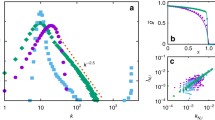Functional capabilities of the two types of neuronal networks in the human brain, namely those formed on the basis of exclusively genetic information and those formed with the use of the experience stored within the lifetime, have been compared. It is stated that modifications of behavior based on accumulation of biologically and/or socially expedient experience may be provided only by neuronal networks formed with the involvement of psychic (mental) phenomena.It is assumed that the process of using the experience accumulated within the ontogenetic development is accompanied by the formation of hierarchical functional relationships among neuronal networks of various cerebral structures. Within the framework of such hierarchical functional relations, synaptic connections, which perform functions well known from the neurophysiologic aspect, may also appear neuronal elements providing systemic effects on certain neuronal networks of other networks; these modulatory effects are realized with the involvement of mental phenomena, necessary for storing and using of the ontogenetic experience.
Similar content being viewed by others
References
E. R. Kandel, The Search of Memory. The Emergence of a New Science of Mind, W. W. Norton & Co., New York, London (2006).
J. M. Schwartz and S. Begley, The Mind and the Brain: Neuroplasticity and the Power of Mental Force, Regan Books, Harper Collins, New York (2002).
J. C. Voss, “A review of “Unlocking the emotional brain: Elimination symptoms at their roots using memory reconsolidation,” J. Construct. Psychol., 27, 236-240 (2014), doi: 10.1080/10720537.2013.792756.
O. V. Soloviov and S. O. Soloviov, “On crucial dissimilarities of determinism in informational networks of the human brain and computers,” Shtuch. Intelekt, No. 3, 11-22 (2009).
W. J. Penfield, “Somatic motor and sensory representation in the cerebral cortex of man as studies by electrical stimulation,” Brain, No. 60 (4), 389-443 (1937).
Encyclopedic Dictionary on Cybernetics, Ukr. Sov. Entsiklop., Kyiv (1989).
J. G. Nicholls, A. R. Martin, B. G. Wallace, and P. A. Fuchs, From Neuron to Brain [in Russian], URSS, Moscow (2003).
D. M. Amodio and C. D. Frith, “Meeting of minds: the medial frontal cortex and social cognition,” Nat. Rev. Neurosci., 7, Apr., 268-277 (2006).
A. R. Damasio, The Feeling of What Happens, Harcourt Brace & Comp., New York, San Diego, London (1999).
G. Rees, “Neuronal correlates of the contents of visual awareness in humans,” Philos. Trans. Roy. Soc. London Ser. B., 362, 877-886 (2007), doi: 10.1098/rstb.2007,2094.
E. R. Kandel, “The molecular biology of memory storage: a dialog between genes and synapses,” Biomed. Life Sci., 24, 475-522 (2004).
T. F. Roberts, K. A.Tschida, M. E. Klein, and R. Mooney, “Rapid spine stabilization and synaptic enhancement at the onset of behavioral learning,” Nature, 463, 448-451 (2010), doi: 10.1038/nature08759.
M. Medalla and H. Barbas, “Anterior cingulate synapses in prefrontal areas 10 and 46 suggest differential influence in cognitive control,” J. Neurosci., 30, (48), Dec., 16068-16081(2010), doi: 10.1523/JNEUROSCI.1773-10.2010.
P. Vuilleumier and J. Driver, “Modulation of visual processing by attention and emotion: windows on causal interactions between human brain regions,” Philos. Trans. Roy. Soc. London Ser. B., 362, No. 1481, 837-855 (2007).
R. G. Kozhedoub, “Emotionality and spatio-temporal organization of instant EEG potentials,” Zh. Vyssh. Nerv. Deyat., 55, No. 4, 518-526 (2005).
N. Yu. Ivleva, “Involvement of the mesocortico-limbic dopaminergic system in adaptive behavior,” Zh. Vyssh. Nerv. Deyat., 60, No. 3, 259-278 (2010).
W. Deng, “Adult-born hippocampal dentate granule cells undergoing maturation modulate learning and memory in the brain,” J. Neurosci., 29, No. 43, 13532-13542 (2009),
J. L. McClelland and D. E. Rumelhart, “Distributed memory and the representation of general and specific information,” J. Exp. Psychol. Gen., 114, Jun., 159-188 (1985), doi:10.1037/0096-3445.114.2.152.
O. S. Vinogradova, Hippocampus and Memory, Nauka, Moscow (1975).
K. Woollett and E. A. Maguire, “Acquiring “the Knowledge” of London’s layout drives structural brain changes,” Curr. Biol., 21, Iss. 24, Dec., 2109-2114 (2011), doi: 10.1016/j.cub.2011.11018.
P. J. Lucassen, “Regulation of adult neurogenesis by stress, sleep disruption, exercise and inflammation: Implications for depression and antidepressant action,” Eur. Neuropsychopharmacol., 20 (1), 1-17 (2010),
J. Iglesias, J. Eriksson, F. Grize, et al., “Dynamics of pruning in simulated large-scale spiking neural networks,” BioSystems, 79, No. 9 (2005), doi:10.1016/j.biosystems.2004.09.016.
G. Chechik, I. Meilijison, and E. Ruppin, “Neuronal regulation: a mechanism for synaptic pruning during brain maturation,” Neural Comput., 11, No. 8, 2061-2080 (1999), doi:10.1162/089976699300016089.
M. M. Merzenich and W. M. Jenkins, “Cortical plasticity, learning, and learning dysfunction,” in: Maturational Windows and Adult Cortical Plasticity. SFI Studies in the Sciences of Complexity, B. Julesz and I. Kovbcs (eds.), Vol. 23, Addison-Wesley, Reading, MA (1995).
O. V. Soloviov, “Describing of a case of purposeful behavior of living system in which there is no contradiction between purposefulness and physical causality,” J. Autom. Inform. Sci., 34, 55-65 (2002).
O. V. Soloviov, “The human Ego in a scope of the physical law,” Voprosy Filosof., No. 11, 52-64 (2008).
Author information
Authors and Affiliations
Corresponding author
Rights and permissions
About this article
Cite this article
Soloviov, O.V. Neuronal Networks Responsible for Genetic and Acquired (Ontogenetic) Memory: Probable Fundamental Differences. Neurophysiology 47, 419–431 (2015). https://doi.org/10.1007/s11062-016-9550-5
Received:
Published:
Issue Date:
DOI: https://doi.org/10.1007/s11062-016-9550-5




